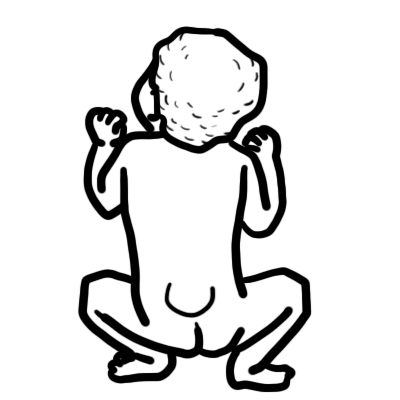Overview
Neural tube defects (NTDs) are a group of major congenital anomalies comprising anencephaly, spina bifida and encephalocele that result from very early disruption in the development of the brain and spinal cord. These conditions are often incompatible with life. Survivors frequently require intensive, costly, lifelong health and social care.
| Definition Neural tube defect (NTD): Severe birth defects of the central nervous system that originate during embryogenesis and result from failure of the morphogenetic process of neural tube closure Spina Bifida: An opening in the skin and one or more of the backbones (the spinal column) that exposes the spinal cord, nerves or the tissues that covers them. The exposed nerves and spinal cord may be disorganised or damaged Anencephaly: The total or partial absence of the upper part of the brain, the bones that make up the top of the skull, and the skin that would cover these parts. The remaining brain tissue may be disorganised or damaged Encephalocele: An opening in the skull bones that exposes part of the brain or the tissues that covers it. Folic acid: Also known as Folate is a B group vitamin necessary for the production and maintenance of new cells, which is especially important during periods of rapid cell division and growth. Occult spinal dysraphism: |
Epidemiology
- Neural tube defects (NTDs) affect an average of 1 in every 1000 established pregnancies world wide
- NTDs rank amongst the commonest of birth defects, alongside congenital heart anomalies and genito-urinary defects
| Remember Folic acid supplementation one month before conception and in the first 3 months of pregnancy has been shown to reduce the risk of NTD. |
Embryology - Neurulation
| Watch Video Embyrology - Neuralation |
Classification
Neural tube defect can be divided into three groups:
- Neural Tube Defects of spinal cord (Spina Bifida) - most common
- Neural Tube Defects of brain
- Neural Tube Defects of both the brain and spinal cord
Neural Tube Defects of spinal cord (Spina Bifida). Spina bifida affects any part of the body that receives its nerve supply from the spinal level at or below the defect can be affected. Babies born with spina bifida and encephalocele may need neonatal intensive care, surgery, rehabilitation and other specialised management
- Open spina bifida - neural tissue exposed (not covered by skin)
- Spina bifida occulta
- Meningocele
- Myelomeningocele
- Closed spina bifida - neural tissue NOT exposed
Neural Tube Defects of brain - not usually compatible with life outside the womb (those that are born rarely survive more than a few days).
- Anencephaly
- Encephalocele
Neural Tube Defects of both the brain and spinal cord
- Craniorachischisis
| Side note There may be more than one NTD present in one baby. |
Risk Factors
- Nutritional status
- Obesity and diabetes
- No folic acid supplementation and/or fortification during and before pregnancy
- Environmental toxicants
- Genetic predisposition among ethnic groups
Signs and Symptoms
| Neonatal Sacral Findings Suggestive of Occult Spinal Dysraphism |
| Location above the gluteal crease (typically >2.5 cm from the anus) |
| Deep dimples |
| Larger dimple size (>0.5 cm) |
| Sacral pits with cutaneous markers (lipoma, hypertrichosis, hemangioma) |
Investigations
Antenatal Screening
- First Trimester
- Second Trimester
- Third Trimester
The second trimester ‘quadruple test’ involves a different formula based on demographic information and the maternal serum levels of four markers
- Alpha-feto protein
- Human chorionic gonadotrophin
- Unconjugated estriol
- Inhibin A.
The information is reported in a similar way to first trimester screening, providing a pregnancy specific risk for Down syndrome, Edward syndrome and open neural tube defects.
The second trimester antenatal screening also uses ultrasound at ~20weeks that looks at:
- Fetal anatomy
- Fetal shape
- Fetal heart rate
- Fetal blood flow
Diagnosis
- Prenatal diagnosis of neural tube defects (NTDs) is based on characteristic findings on ultrasound imaging
- Alpha-fetoprotein + elevation of both amniotic fluid and amniotic fluid aceylcholinestaeras is also considered diagnosistic
Pathophysiology
Exact aetiology is uncertain
Neural tube defects (NTDs) result from failure of the neural tube to close normally during the third and fourth weeks after conception.
Management
Initial Management
- Discuss the diagnosis, natural history and prognosis with the family
- Neurosurgery - potentially indicated for correcting the defect and also for the insertion of a shunt (for hydrocephalus)
- Urologist assessment - for neurogenic bladder
- Orthopaedic assessment - ↑developmental hip dysplasia
Ongoing management The management of patient with neural tube defect requires a multidisciplinary team - General/family physician, paediatrician, neurosurgeon, orthopaedic surgeon, physiotherapist, child nurse and more.
- Mobility - orthopaedic surgeon, physiotherapist and orthotist.
- Neurogenic bladder - urologist referral
- Urinary incontinence -
- Clean intermittent catheterization, which results in more complete emptying than simple Credé maneuvers
- Artificial urinary sphincter to increase outlet resistance
- Surgical urinary diversion (e.g., suprapubic vesicostomy), which is uncommonly used
- Augmentation cystoplasty to increase bladder capacity in combination with the use of oxybutynin (a smooth muscle antispasmodic)
- Urinary incontinence -
- Neurogenic bowel
- Constipation - Laxatives
- Faecal incontinence - Anal plug
- Mental health - Psychologist and or psychiatrist
- Fertility specialist
- Treat commorbidities
- Epilepsy
- Scoliosis
- Obesity
Complication and Prognosis
Complications
Spina bifida affects any part of the body that receives its nerve supply from the spinal level at or below the defect can be affected.
- Neurogenic bladder
- urinary incontinence
- ↑UTI
- Neurogenic bowel
- constipation
- faecal incontinence
- Hydrocephalus - 95% of children with thoracic or high lumbar myelomeningocele
- Intellectual disability
- Cardiovascular disease
- Sexual dysfunction
- Lymphoedema
Prognosis
- Spinabifida
- NTD involving brain - poor prognosis













